There is no ‘best’ engine to use for any Subaru engine conversion. This is because different customers have different expectations or requirements. One customers’ ideal engine may be the last thing another customer would want. To be able to choose an engine spec to use, we recommend you start by deciding how many horsepower you are looking for.
Buying a particular engine because it is available, without really considering whether it suits what you need, is generally not a good idea. Many times we’ve seen customers who have bought, or are about to buy a turbo engine because it’s available, but when you speak to them more about what they actually want, a normally aspirated EJ20 would far better suit their needs. Or customers who have mad ideas like buying a turbo engine because it’s available, and attempting to remove the turbo and run it as naturally aspirated. This is insane thinking – if the objective is to have the engine run as efficiently and as reliably as Subaru intended, you need to run it as Subaru intended.
Others sometimes seem to assume that because their 50 bhp VW engine won’t pull them up a particular hill, etc without dropping down to 2nd gear, they need 200 bhp plus to make it nicer to drive. That’s absolutely not correct. In most cases 125 bhp from a normally aspirated EJ20 or 160 bhp a normally aspirated EJ25 (a 250% or 320% increase respectively) is easily more than enough to make it ‘nicer to drive’ / more economical / more reliable, if that is the objective, which it is for probably 90% of customers. It also makes the conversion considerably cheaper and easier to install than a turbo or a six cylinder.
The most commonly used engine by a very long way is the normally aspirated EJ20. Partly because they gives the balance of bhp vs economy that most customers want, and partly because they’re far more readily available than all of the other engines in most markets (they’re probably not the most readily available in the US or Australia, where EJ25’s were more common).
The following list gives more info on which pre CAN bus engines / management systems from European specification normally aspirated Subaru models are suitable, what models they were in, and when:
EJ15 / EJ16 / EJ18:
MY92-MY07 Impreza
MY97-MY07 Forester
MY90-MY03 Legacy
The EJ15, EJ16 and EJ18 engines are uncommon, at least in the UK, and are very rarely used in VW conversions, but there is no reason why all within the model / year ranges above cannot be used
EJ20:
MY92-MY07 Impreza *MY97-MY07 Forester *MY90-MY03 Legacy
The EJ20 is by far the engine most widely used by customers. 115 to 125 bhp depending on model. About 29 miles / imperial gallon (24 miles per US gallon, 10.3 km/L) in a manual, steel / low roof 2wd T25 / T3 / Vanagon, when driven with economy in mind.
* Some, but not all MY05-07 models ‘drive by wire’ throttles – these can be used but are an awful lot more cost and complexity for no gain, so I recommend you avoid them
EJ22:
MY90-MY97
Up to the late 2000’s, EJ22’s were by far the most widely used Subaru engines for VW conversions, but for no reason other than most doing conversions were copying what they had seen others do online. By the late 2000’s / early 2010’s the EJ20’s caught up, at least in Europe, and soon overtook the EJ22. 135 bhp
You will read online about normally aspirated EJ22 engines later then MY97. They were used up to around MY02 in the US and Australia, but were discontinued in European models in MY97
EJ25:
MY96-MY99 Legacy (DOHC) **
MY00-MY03 Legacy (SOHC) (Generation III Legacy models only – these are a totally different car from Gen II and Gen IV, so are very easy to distinguish visibly – see the Subaru Legacy Wikipedia page if you are not familiar with the differences).
155 – 160 bhp depending on model. About 27 miles / imperial gallon (22.5 miles per US gallon, 9.5 km/L) in a manual, steel / low roof 2wd T25 / T3 / Vanagon, when driven with economy in mind.
You will read online about normally aspirated EJ25 Imprezas and Foresters. They were never sold in Europe – only Australia and the US (and possibly Japan).
** the MY96-MY99 DHOC EJ25’s were renowned for having cylinder head gasket failures. The gasket design is the cause, and can be fixed by swapping the gaskets for an improved design, but only if the problem is correctly diagnosed and fixed before the engine overheats enough to distort things. The problem is that the symptoms are unusual, and the fault was often not diagnosed and fixed quickly enough.
EZ30:
MY00-MY03 Legacy (aluminium inlet manifold models only, not plastic). (Generation III Legacy models only – these are a totally different car from Gen II and Gen IV, so are very easy to distinguish visibly – see the Subaru Legacy Wikipedia page if you are not familiar with the differences)
The EZ30 engine is not a straight forward installation. Almost everything plumbing / pipework related will need to be custom made, as nowhere near enough conversion will ever be done using these engine s to justify the investment in tooling for hoses, etc. 217 bhp
EG33:
MY92-97 SVX
The EG33 engine is not a straight forward installation (more complex than an EZ30). Almost everything plumbing / pipework related will need to be custom made, as nowhere near enough conversion will ever be done using these engine s to justify the investment in tooling for hoses, etc. 240 bhp
The above info is not enough detail about the Subaru to specify which components are needed for a VW engine conversion. There are multiple versions of many of the above engines / engine management systems, which do not always use the same conversion parts. As well as the Subaru model that the engine is from, the Subaru model year and whether it is from a manual or an automatic is also needed.
The above information is not correct for non European / ‘rest of world’ specification Subaru models. Specifically not for Japanese or US spec models, which used unique engine management and frequently used engine hardware combinations which were not used elsewhere.
If you want your conversion project to go smoothly, we highly recommend not attempting to mix and match engine and engine management components from more than one donor Subaru. We don’t do any work on the engine management systems for:
- such ‘mix and match’ attempts (only for conversions in which all the Subaru hardware is from a single donor vehicle)
- any post 1994 US spec management systems
- most Japanese spec management systems
……preferring to concentrate on the European and ‘rest of world’ spec management systems.
VW model specific engine choice exceptions
Avoid MY01 onwards models with exhaust gas recirculation if you are installing into a late bay / T2b. These were fitted in some, but not all post MY01 models in Imprezas, Foresters and Legacies. The post MY01 models without EGR are not a problem.
Choosing a Subaru engine by going for one that is most easily available can be a very bad strategy. We’s seen numerous customers building conversion which do not meet their requirements over the years because of this. Examples being:
- Installing a Subaru turbo engine, often without realising how much more complex and expensive that is, when the objective is just to be able to overtake on the motorway because the old 1.9 DG or diesel engine couldn’t.
- Looking for an EJ20 or an EJ25, but buying an EZ30 because it was available, again often without realising how much more complex that conversion is
- Buying a CAN bus engine either without realising it or without having a good understanding of how much more complex and expensive both the engine management and mechanical side of that spec of conversion will be
- Buying an engine without the necessary engine management hardware and / or wiring from the same donor car. Either without realising that it is needed, or realising, but incorrectly assuming they’ll easily be able to source those parts with certainty that they suit the engine.
Those who have bought an engine or a complete donor car which doesn’t match their requirements very well too often seem to think that they have already passed the point of no return, so now have to continue with this engine. That couldn’t be further from the truth. In all of the examples above, it is very very much easier to change to a more suitable engine before starting the conversion than it is to discover what the implications of such a wrong decision up front was when you’re half way through, and maybe many £’s into a conversion. Starting with an engine which either doesn’t suit your requirements, especially one which is also more complex / expensive to install then the typical, more suitable spec is probably the number one way people get out of their depth with engine conversion projects.
Yes. Engines from automatic Subaru’s do not have a flywheel or clutch so you’ll need to add them. This is the main mechanical part of converting an automatic Subaru to manual spec. There is a bit more involved for some engines if you want to do the job properly. In particular, you’ll need to fit the additional manual only cam belt guide if your Subaru engine is an EJ series from MY98 or later. You can also fit the additional cam belt guide to earlier EJ series engines, but only if you change the oil pump for an MY98 or later type.
Electrically Subaru engine management systems from autos are always different to the manual version, and you need the engine management to run as if in a manual Subaru whether in a manual or an auto VW. This means the harness work to build an ‘engine management only’ harness for your VW is quite different if the engine has come from an auto relative to a manual, but the total amount of work is about the same, and the cost is the same. There are a small number of Subaru engine management systems which were only ever made for automatics which cannot be reconfigured to run as a manual because the ECU’s do not have the manual software. These include the EG33 and all pre CAN bus EZ30’s. All of the EJ series management systems used in European / ‘Rest of World’ spec Subarus tend to have the manual software. The same can’t be said for all Japanese and possibly US / Canadian spec models though. Some of them are ‘auto only’ (e.g the JDM EJ204 which has AVCS (variable valve timing), as fitted to MY99 Legacy Lancasters) . These can always still be used in manual applications, but may run with error codes due to them expecting signals from the transmission controller ECU. This is not a problem, as long as you are not also using Subaru cruise control.
All of the wiring harnesses, complete and intact, from the A-posts forwards (‘A-posts’ are the pillars that the front door hinges are attached to)
The engine management ECU. This has a pert number beginning ‘226’, and will be in the dash (MY90-94 Legacies), or in the front passenger footwell in all other models / model years, with one exception. The MY97-MY01 Forester normally aspirated EJ20 has it’s ECU mounted on the engine.
The engine management relays:
– One or two brown rectangular plastic Jideco 6 pin relay with a part number beginning 25229:
– All of the silver round metal Denso 4 pin relays (these are not marked with Subaru part numbers):
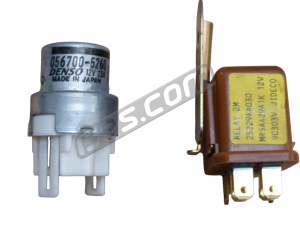
All of the transponder key immobiliser hardware in models which have immobilisers:
– The immobiliser ECU. A small black plastic ECU made by Siemens (MY96-99 Legacy or Impreza), Denso (MY97-01 Forester) or Mitsubishi
(MY00 onwards Impreza or Legacy and

– The antenna ring from around the ignition lock barrel, part number beginning 88213:
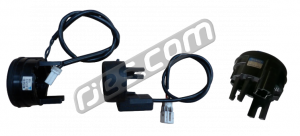
– The ignition lock barrel assembly:
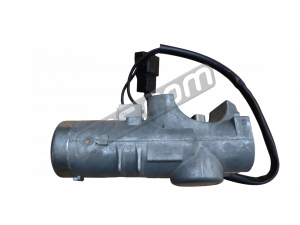
Some models have a fuel pump modulator. If yours does, you need it, along with it’s connector(s) with a reasonable length of wire attached. These were mounted in the boot / trunk, in the following models:
– SVX, separate modulator and resistor modules mounted on the underside of the ‘parcel shelf’
– Some but not all turbo models from MY98 onwards, single modulator module usually mounted between the RH inner and outer wing / fender,
accessible after removing the RH boot / trunk carpet.
– Some but not all EZ30 6 cylinders, mounted in the same location as turbos
Try Import Car Parts . They ‘grey import’ a lot of genuine Subaru parts and sell them for less than the UK dealerships. If it’s service parts you’re after, they often stock other brands as well as the genuine parts. If it’s a Subaru thermostat you’re after, don’t buy any aftermarket brand – only use genuine Subaru ones.
If it’s a T25 / T3 Vanagon and you’re in the UK of shopping with UK suppliers, Brickwerks are generally the best supplier. They care about the quality of what they sell, so generally don’t sell some of the awful quality aftermarket parts which the competition are happy to stock.
Apparently the owners of some of the biggest UK aftermarket VW parts suppliers believe they’re ‘offering their customers more choice’, but with some of the worst quality products (for example JP Group’s non plated clutch release shaft for the 091 and 094 gearboxes 1130701000 ), they’re actually just supplying total crap which, in cases like this are regularly not fit for purpose for up to 3 reasons on the same part. When customers return them, even with clear evidence someone has been sanding the parts trying to make them fit, they just put them back into stock and sell them to someone else. If anyone high up at the UK’s two biggest VW parts suppliers should read this, if you didn’t keep buying parts like this (the worst quality aftermarket VW part we’ve ever come across), JP group would either have to stop selling them or fix their multiple quality problems. Nobody who has ever bought one of these will think you’re ‘doing them a favour’ by stocking such junk. If you want to know what’s wrong with them in detail, we can tell you. We developed our own version specifically because of the problems cause by the terribly quality of this part.
See CAN bus
The first European / ‘rest of world’ spec Subaru models which used CAN bus were high spec Legacy models in MY00. Specifically those with Vehicle Dynamics Control (i.e. traction control). These same systems will almost certainly have been introduced earlier in models unique to the Japanese market (probably MY98). Typically it was higher spec EJ25 and EZ30 models which had VDC, with it not being an option on lower spec models. This earliest CAN bus use did not involve engine management at all. The CAN network was used between the VDC system and it’s yaw rate and steering angle sensors, and the automatic transmission controller. This has no effect on using their engines in conventional VW engine conversions.
The first European / ‘rest of world’ spec Subaru models which used CAN bus engine management were the Generation IV Legacy models introduced for the MY04 model year. CAN bus was first used in European / ‘rest of world’ spec Impreza and Forester models in MY08. Again, the introduction dates will be different in the markets with unique emissions requirements (i.e. Japan and the US), almost certainly earlier in Japanese spec models, and at least one year later in some US spec models. In all of these models, the CAN bus used expanded from the limited use in high spec earlier models to what became much more typical in most cars around the same era – CAN being used for initially some, then later most communication between all major electronic modules, such as ECU, automatic transmission controller, dash instrumentation, ABS / VDC, infotainment, HVAC, the diagnostic port, and BIU. Earlier models used two separate CAN buses, operating at different speeds, with the BIU acting as the gateway between the two networks, passing data between them.
Prior to CAN bus, cars used numerous electronic modules with specific functions. Examples are timers for things like intermittent wiper control or heated rear windows, central locking controllers, immobilisers, etc. Often these contained no software at all, so were not configurable. The Body Integrated Unit (BIU) is a single device with a much more powerful micro controller than any of the previous individual modules would ever have had which combined the functions of most of them into one unit. This is very advantageous for a manufacturer, as it is cheaper to manufacture and assemble, requires less variance between models, and means that just about everything can be configured via software. Pretty much all OEM’s started using similar modules around the same time for the same reasone. Whether they are as advantageous to those working on the vehicles in the aftermarket is debatable, as they can make diagnosis, and previously easy jobs like replacing damaged engine management or immobiliser hardware very much more complex.
In CAN bus Subaru’s most of the BIU’s functions are nothing to do with engine management. However, the transponder key immobiliser is one of the jobs that the BIU took over from a previously discrete module, so this makes it a part of the engine management system. Typically the BIU also puts various engine related signals on to the CANM bus, takes them off, or passes them between the multiple CAN networks.
Electrically, using a Subaru engine with CAN bus engine management unavoidably adds a lot of cost and complexity to an engine conversion project with no benefits. They also add considerably to the amount of wiring needed to make an ‘engine management only’ harness, and also to the amount of hardware which must be retained or added to make the engine run. Anyone who claims using a CAN bus engine is advantageous is not being honest with you.
The CAN bus engine management systems can also be considerably harder to repair relative to the pre CAN bus models, specifically if you have a problem which involved replacing any part of the matched set of immobiliser hardware. (i.e. if you have bought a mismatched or incomplete set of hardware, or is a part gets lost of damaged). With the CAN bus models, the matched set of immobiliser hardware consists of ECU, BIU, transponder key chip, dash instrument cluster. With the pre CAN bus models this is so self-explanatory that no dedicated instructions seem to exist – anyone with the right dealer level diagnostic tools and info can do it. For the CAN bus models, as well as many models needing the next lever of dealership diagnostic gear, you also need the relevant instruction manual, of which there are more than one, and they are up to around 7mm thick, and full of very complex tables explaining how to replace each component. You will find it considerably harder to find anyone who had the tools and knowledge to do this, and who is also prepared to plug in to a VW than with any of the pre CAN bus models.
Prior to CAN bus, the engine management in a vehicle was effectively a ‘stand alone system’, depending on nothing else to function. Despite being heavily tangled around the other systems in a Subaru due to how Subaru don’t use individual wiring harnesses for the engine management like some other cars did, the boundary between what is and is not engine management is very black and white. There is no ambiguity. This makes the pre CAN bus engine management systems very good candidates for engine conversions such as into VW’s. The whole engine management system can be extracted from the rest of the electrical systems in the Subaru, reshaped to suit a VW, and have suitable VW power supply wiring and other supporting systems such as radiator fan control added, and be made into an ‘engine management only’ wiring harness, with all of it still exactly as Subaru intended – i.e. with no engine management circuits or signals missing. Done right, as is our objective, this can result in a near OEM quality, ‘plug and play’ installation into the most commonly used VW models. In all but a few cases this guarantees that the engine will run in the VW exactly as it did in the Subaru, with no error codes.
Once an engine management system uses CAN bus of the other newtworked automotive communication systems, what is and is not engine management becomes a lot more grey. The engine management can be using data from just about any other system in the vehicle, with the only ways to know what information it is using, from where, and in what format being either OEM level inside information, or reverse engineering at the CAN message lever (i.e. packet analysis / packet sniffing).
In all CAN bus Subaru cases, the engine management will be depending on various data from other systems in the Subaru which is is undesirable or impossible to also transfer into the VW. Therefore for the engine to run as Subaru intended in another application, this missing data from other systems which are not present has to be put onto the CAN bus using aftermarket, or in some cases modified original hardware.
Also, despite not being directly related to the engines using CAN bus engine management, Subaru introduced many other changes to the engines at the same time. Many or most of these make the engines less suitable for VW conversion use.
Throughout the 1990’s and into the early 2000’s the changes to the EJ series normally aspirated engines had been limited. How all the systems worked remained very similar, and variations between the engines to suit which car model they were for were minimal. At around the same time as ‘drive by wire’ engine management was introduced, Subaru started making some more significant mechanical changes, such as:
- Changing from 3 minor variants of the same coolant manifold design which had been used since 1990 to many different variants, none of which lend themselves to being reversed for near VW installation as the earlier designs had. From CAN bus introduction to around MY09 Subaru had used at least 6 new coolant manifold designs.
- Changing the cooling system priority during engine warm up from heating the car interior to keeping as much heat in the engine as possible for emissions reasons. This required changing the heater system from one in which the heater matrix is always hot, and in which the flow through it is required to keep the thermostat hot, to one in which the heater matrix is only how when required. This required additional engine plumbing complexity and a solenoid valve.
- Changing from a system in which the automatic transmission is cooled by a conventional oil to air heat exchanger, to a more complex system in which transmission is cooled or heater by the engine coolant via an oil to water heat exchanger and an additional thermostat. This required more additional coolant plumbing on the engine, and a coolant manifold with a location for the 2nd thermostat, and was typically used with the changes to the heater circuit described above. Strangely some manual models also used this system, with a blanking plate fitted in the 2nd thermostat location despite other models still using coolant manifolds which don’t have the 2nd thermostat location.
- Changes to throttle body location. As well as all of the throttle bodies being different sizes on the CAN bus engines because they are all ‘drive by wire’, Subaru started using multiple different throttle body locations on different engine models. All of the cable throttle models had used the same throttle body size in the same location, and while not ideal for VW conversions (hence the need for throttle body reversers in bay and Beetles), this was OK, as it could be made to work in all VW applications. With the ‘drive by wire’ models, Subaru moved the engines down slightly in the body at some point, and used up the space they’d made above the engines with taller inlet manifolds, some of which also had their throttle bodies pointing slightly more upwards in a way which is not helpful for VW conversions at all. Other models tilted the throttle body downwards to near horizontal, but also moved it a long way towards flywheel end of the engine by having a long ‘neck’ on the inlet manifold. This version is not really viable in any VW conversion unless you don’t mind hacking the bodywork around to make space, as there is not enough room to get an induction hose onto the throttle body in its standard location, or to add an elbow between the throttle body and manifold to move it out of the way.
- Introduction of new emissions related systems such as secondary air injection , exhaust gas recirculation , and tumbler valves to meet the then new Euro 4 emissions requirements. EGR had previously been used on many of the previous Euro 3 engines, and catalytic converters sinec Euro 1 back in MY92. But with Euro 4, more of these systems are typically used together than in any previous combination. For example for first ‘drive by wire throttle’ engines in around MY05 had EGR, secondary air injection and one of the many revised cooling systems which function differently together. Many of these are not too big a deal on their own to make them fit into most VW models neatly. Electrically none of them are an issue in VW conversions at all. However, mechanically the parts are a problem in most VW’s. With secondary air injection, one or both of the valves (depending on the engine) prevent the installation of a reversed coolant manifold, and one or both valves will be in the way of the bodywork in some VW models such as a late bay / T2b.
Whether you need to use the secondary air injection depends on the emissions requirements for engine converted VW’s where you are. There is absolutely no point using the secondary air injection on your engine if you are not installing a catalytic converter, as it’s only function is to enable the cat to warm up faster following a cold start. However removing the system is not straight forward. As well as removing the parts and blocking the ports in the cylinder heads, you need to retain the pressure sensor, which is built in to one of the valves.
An engine having multiple of these extra systems, as all the Euro 4 onwards models do, just compounds the additional work in making them fit into VW’s. Those with the least suitable changes such as very incompatible throttle body positions are not really suitable for VW use at all.
Some other later changes to the mechanical spec of the later model EJ series engines generally do not affect their suitability for installation into most VW’s, such as the introduction of dual AVCS (variable timing of both the exhaust and inlet cams on DOHC engines).
Because there are many variants of most of the systems which changed or were new for Euro 4, making parts for installing them in VW’s which require tooling, such as induction hoses is a lot less viable than it was with the Euro 3 engines, where variants of the same parts fitted all well over 10 years worth of all the normally aspirated engines.
Make sure you understand the implications of all of these mechanical changes to the later model EJ series engines, as well as the implications of using CAN bus engine management before deciding to use one. Ignorance of these would be a very easy way to find yourself out of your depth in terms of complexity and / or cost if you’d assumed the project expected to be simple like a pre CAN bus engine conversion. Diving into a project using any ‘drive by wire’ Subaru engine without understanding all of the releveant implications up front would be an ideal way to start what later becomes an ‘unfinished project’.
If ‘waterless coolants’ were as amazing as their manufacturers claim, they would publish the specific heat capacity data for their products, as this would be the best marketing possible.
Specific heat capacity is a direct measure of the ability of a substance to move heat (a measurement of the energy required to change the temperature of a given amount by a given temperature), and water has one of the highest values of any common substance which is suitable for engine cooling. The antifreeze / corrosion inhibitor products required to make water into a suitable engine coolant have lower specific heat capacities than water, so the actual specific heat capacity of a water / antifreeze mix depends on the mix ratio. However, the mix ratios usually used don’t decrease the figures too much, as shown below:
Water / Ethylene Glycol antifreeze coolant mixture specific heat capacity and typical use in engines:
| Ethylene Glycol Antifreeze % by weight: | Specific Heat Capacity, cp (kJ/(kg oC)), at 80 oC: | Typical usage: |
| 0 | 4.19 | |
| 10 | 4.14 | |
| 20 | 4.05 | |
| 30 | 3.93 | Minimum ratio, moderate climate |
| 40 | 3.80 | |
| 50 | 3.66 | Most climates |
| 60 | 3.49 | Maximum ratio, very cold climate |
| 70 | 3.31 | |
| 80 | 3.12 | |
| 90 | 2.90 | |
| 100 | 2.68 |
So called ‘waterless coolant’ products are based on almost pure ethylene glycol or propylene glycol, and have a specific heat capacity of just 65 – 70% of that of a typical water / antifreeze mix. Interestingly they have both also been banned in a lot of motorsport, for multiple reasons. They are flammable, and many times more slippery than water or normal water mixes when spilled on a road or track. Some have even banned all coolants when mixed with water due to the latter, meaning only water is allowed as a coolant on their tracks.
There are plenty of other concerns about ‘waterless coolants’ if you delve deeper into the subject. They include the effects of the considerably higher viscosity on cooling systems not designed for them, and increased engine temperatures.
If you are wondering why we have an opinion on this, it is down to a customer having used the most common waterless coolant brand in his bay window bus conversion which used our under floor radiator system. By then the radiator system had been on sale for many years, and was well proven to cool way in excess of a normally aspirated EJ25 engine in a UK climate without relying on the fans coming on any more frequently than you would expect them to in a production car. The customer with the waterless coolant had constant problems with coolant temperature right from the start, and we quickly came to the conclusion that everything was plumbed correctly. He had followed the filling procedure, had a genuine Subaru thermostat which we had proven worked correctly.
Effectively, we’d eliminated all the other variables except the coolant, and recommended that the customer replacing it with conventional coolant was the only way he would find out whether the coolant was the cause with certainty. He was very reluctant to do this, having spent many hundreds of pounds on the coolant and the flushing chemicals sold by the waterless coolant supplier to clean the system out prior to filling. What finally convinced him to try what we’d been suggesting was interesting. He’d fabricated something and wanted to cool it quickly immediately after welding. Anyone who fabricates or otherwise heats steel parts regularly soon gets a feel for how effective water is at cooling them fast. The first thing that came to hand for him to cool the part was a jar of left over waterless coolant. He plunged the part into it, stirred it around for a couple of seconds, and then burned himself on the still very hot part, knowing that water would have cooled it to a safe temperature in that time.
He drained the waterless coolant from his bus, replaced it with water, and it cooled as it should right away. An expensive lesson learned, and very interesting feedback for us.
If you’re still tempted by the marketing hype / BS from the purveyors of waterless coolant, try looking up the prices of the base chemicals which they’re based on (they’re readily available online), and then ask yourself how they justify the insane prices. You’ll see 15 litres of ethylene glycol is about £60 – £75 including VAT and shipping (2022 prices) – they’re not particularly expensive chemicals. ‘Waterless’ coolants for modern cars are ‘snake oil’ products, dependant on hype and marketing to sell unsuitable products to the unsuspecting. Follow the science, not the hype. If they were so superior for engine cooling, why are the manufacturers of hypercars, etc, where no expense is spared manufacturers not using them, and why have the biggest OEM’s who have the biggest R&D budgets not switched to them? Some of them kind of have their industrial applications, for example where ethylene glycol can’t be used because of its toxicity or electrical properties (food industry, etc, environmentally sensitive applications, welder cooling, etc), propylene glycol based products are used. However, it’s not usually used pure or near pure, but significantly watered down because the water massively increases the specific heat capacity in all applications which allow it.
Since our research for the above, which was many years ago, when nobody seemed to have measured the specific heat capacity of these ‘waterless coolants’, they now have. We based our ’60 – 70% of that of water’ on what their ingredients are, but now a company called No-Rosion have published their test results. They also make an alternative engine coolant, but theirs is, unsurprisingly, water based. See the No-Rosion Waterless Coolant test results – they confirm out assumptions as being correct (64 – 68% of the specific heat capacity of water), but go into far more detail.
Examples of the unbelievably bad quality work we have seen from long standing, mostly UK businesses who promote themselves (often very heavily) as ‘Subaru engine conversion specialists’. None are the work of amateurs – all are from those who promote themselves as professional specialists. If you have any knowledge of engines or engineering, you’ll probably be shocked and / or amused by many of these, but they’re all real, and not one offs:
- The idle speed control airflow blocked off totally on the Phase I engines by holding a coin in the hose to the valve with a hose clip. Then jacking the throttle valve stop screw open to allow air into the engine so it can sort of idle (the screw never needs adjusting under any circumstances on any Subaru engine, unless someone tries to use it and an alternative to the idle speed control system which they have disabled for no apparent reason)
- Removing all wiring for the cold start circuit for many years, and trying to fob off customers with excuses when they cannot start their VW in freezing temperatures. We flattened the usual battery plus a tractor sized battery unsuccessfully trying to start a local guy’s dodgy conversion in which the cold start circuit they had removed. We later got so fed up with their customers getting in touch wanting us to fix this incomprehensible error that we published how to do it on a forum the company owner frequented.
- Solid core (i.e. not flexible) domestic mains wiring used within Subaru engine management wiring
- Consistently very neatly taped joins where wiring harness modifications have been made, which always contained wires just twisted together, never soldered or crimped.
- Subaru wiring harnesses which have clearly been chopped into multiple parts by someone who couldn’t be bothered to remove them intact, then joined back together using only the awful ‘pre insulated’ red / blue crimp terminals, all exposed to the weather
- Consistently never fitting vehicle speed sensors for many many years, then trying to fob off all customers who complain about the symptoms which this unavoidably causes (which can be so annoying as to make certain engine management systems virtually undriveable) with total nonsense excuses
- Consistently removing the thermostats because they had no understanding of how the cooling system worked of the need for a heater bypass, and this was the only way they could get the coolant to circulate
- Impreza and Legacy ECU’s which are not remotely weatherproof (they’re a PCB in a perforated steel box) regularly mounted on the ‘shelf’ by the battery in bay window buses and T25 / T3 / Vanagons – directly below the vent behind the rear window, which rain can and does enter through
- Coolant plumbing to the front mounted radiator in Beetles made from numerous sections of used, rusty exhaust pipes welded together (yes, really – we’ve only seen one example of this, but the owner told us who had done all of the installation work)
- Systematic removal of all diagnostic features on Subaru engine management systems
- 1700 or 1800 type 4 bus clutches installed for Subaru turbo engine conversions using adaptor plate / flywheel kits to join them to the VW gearbox – they don’t have anywhere near the required torque capacity for even the normally aspirated EJ20 and EJ25 engines, so can’t last 5 minutes with a turbo
- Adaptor plates which hold the engine and gearbox out of alignment by 14 (yes, fourteen) times the maximum engine to gearbox alignment tolerance we use on our bell housings. Not surprisingly, this causes big problems
- Consistent major problems with the power supply wiring to Subaru engine management, including no fuses, seemingly random fuse assignment, and drawing all of the power for the engine management through the VW ignition switch (VW ignition switches are not rated for anywhere near that much current, and quickly fail as a result)
- Regular incorrect connection of the memory backup wire of some Subaru engine management systems to an ignition switched power source. This means that every time the engine management is off for more than about a day, the ECU loses all of learned ignition map, so always starts from the most retarded map settings, reducing performance and fuel economy. Given that it takes more than a tank of fuel for the ignition map to adapt fully to the fuel you use, the map will never fully adapt, as it gets reset every time you don’t run the engine for a few hours
- Exhaust systems where the entire weight of the system is hung from the plastic cam belt covers via their M6 screws (into metal inserts in the plastic covers). Unsurprisingly the cam belt covers don’t like that much, and the first time we came across a customer unfortunate enough to have bought this system, its mounting system had already failed. Probably the most blatant example of design by somebody with no clue what they are doing that we have ever seen.
- Engine mounting sub frames in VW buses made from a chopped up Subaru front sub frame, plus over 10 pieces of random, mismatched angle iron and box section (clearly scrap metal) stacked to fill the gaps between it and the chassis rails, then all welded together (including to the chassis). Most of the contraptions built on Scrapheap Challenge / Junkyard Wars would be much better built than these.
- Engine mounting sub frames in VW buses made from a chopped up Subaru front sub frame, plus over 10 pieces of random, mismatched angle iron and box section (clearly scrap metal) stacked to fill the gaps between it and the chassis rails, then all welded together (including to the chassis). Most of the contraptions built on Scrapheap Challenge / Junkyard Wars would be much better built than these.
- A cooling system which has zero chance of cooling at motorway speeds in the summer without being entirely reliant on the fans being on all the time. ‘Featuring’ attempts to cover their work in terms of warranty regarding overheating by hiding maximum temperature tell tales on the engine. Then when the next customer tries to claim warranty because their engine seized, they can uncover the tell tale, and ‘prove that the customer has allowed it to overheat’.
- Offering fabrications such as engine mount crossmembers for sale, but when a customer tries to order one, they’re asked to deliver their VW to them so they can fabricate it in situ! Clearly no understanding of production fabrication or fixturing at all.
- Consistently never putting antifreeze in the cooling system of their conversions. The cooling system that the offending company fits into all of their air cooled VW bus models cannot work without relying on fans, so after much struggling their customers often get in touch with us wanting a system which works. We frequently end up modifying their Subaru coolant manifold to fit in reverse as part of the solution, and the original installers work is immediately identifiable because of a couple of strange things they do to the coolant manifolds. Pretty much without fail the inside of the aluminium casting is entirely rust coloured – a sure sign it’s been running with no antifreeze.
All but a few of these are examples of the work of a very small number of UK companies, and are things we’ve seen multiple times (except where stated above). We don’t go looking for this stuff – we don’t work on customers vehicles at all. All of this finds us when the unfortunate customers of awful products and / or workmanship go looking for solutions to the problems with their conversions. For many the above, there is no possible other explanation other than an absolute lack of understanding of the systems being worked on. The lack of engineering knowledge required to achieve most of the above is beyond shocking – anyone doing work at this level has no business manufacturing anything.
This applies not only to the Subaru engine conversion world, but the entire rear engined VW modification world, and I suspect many other car ‘scenes’ too. Examples would be well over half of the suspension, power steering and brake conversion products which we see being made for the VW scene in the UK and marketed at VW shows, etc. Fabricated dropped spindles on which the welds are cracked before they have even been installed, or electric power steering conversion kits which remove all of the collapsibility which VW designed into the steering column anybody? No thank you.
We have product liability insurance covering all of our products (except sales to the US). It’s more than clear that the purveyors of most, probably all of the awfully engineered products we’ve mentioned in this article have no comprehension of what product liability is. Product liability cover as a small business manufacturing components for vehicles which will be used on the road is exceptionally hard to get. Most business insurers won’t touch it, and with the crap mentioned above being churned out by self-proclaimed ‘specialists’ with no backgrounds in engineering design and products development, it is not hard to see why.
The moral of this story is do your homework before choosing a company to install a Subaru conversion for you in the UK. Look deeper than whoever is constantly on Facebook promoting themselves, and at least Google their reputation.
In March 2023 we were asked to ‘tone down’ some of the information on this page by someone involved in doing some of that work, after they initially accused us of directly criticising them or their business. After realising we’d not actually named them or anyone else, they then thought this page made it too easy to identify who’d done the work. We didn’t agree – many of the above only seemed so familiar to them because they know who was responsible. The average potential new customer likely has no idea that some of the conversion work being marketed may not be done to the standard that they expect, and they deserve to know that Subaru engine into VW products and workmanship are a very long way from all being the same. This site has never named who did any of the work listed above, but their request wasn’t unreasonable, so a few edits were made. We have no regrets pointing out how low the quality of some of the Subaru engine conversion industry is or has been in the UK. If the purveyors of some of it are shamed into raising their game, great. That, Subaru engine conversion customers not getting ripped off, and encouraging potential customers to scratch beneath the surface in terms of researching who does their installation work is and was always the objective. The whole UK Subaru engine conversion industry gains if the quality of the worst conversions increases.
This is an example we recently did – a complete re-work on for a customer who sought out help after having multiple electrical problems with a camper they’d bought with a conversion already installed:
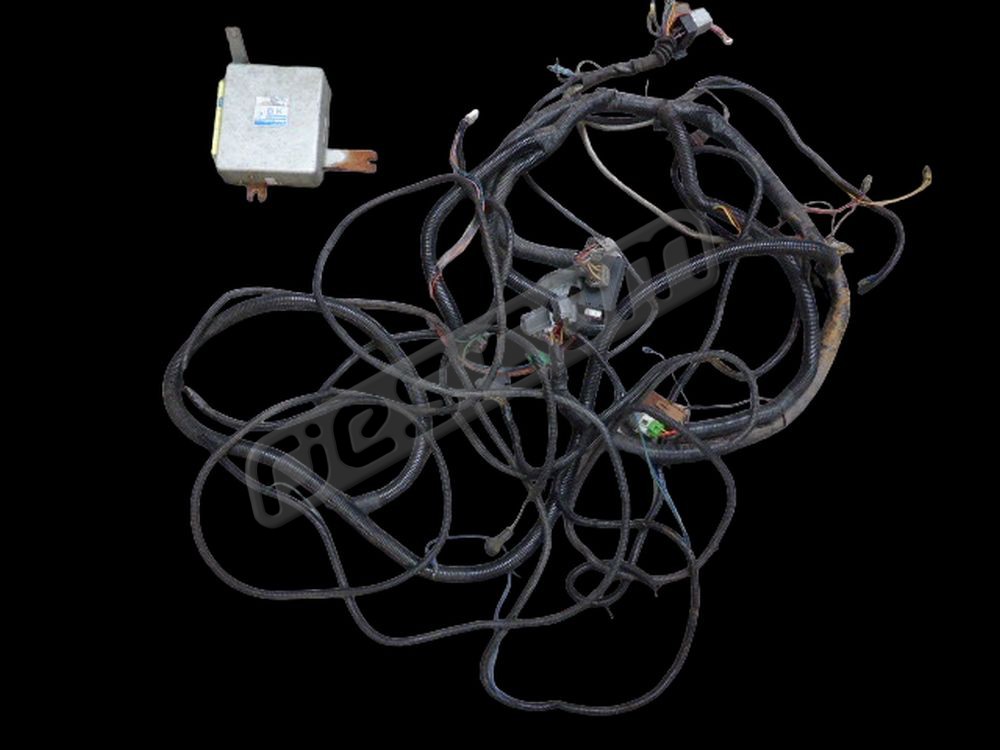
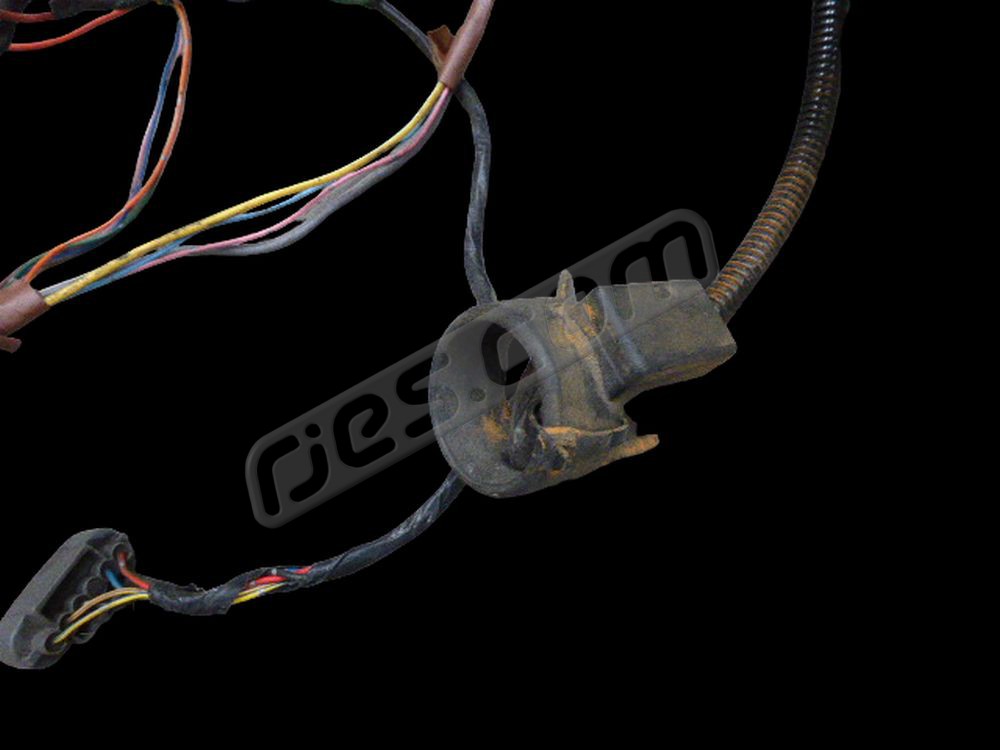
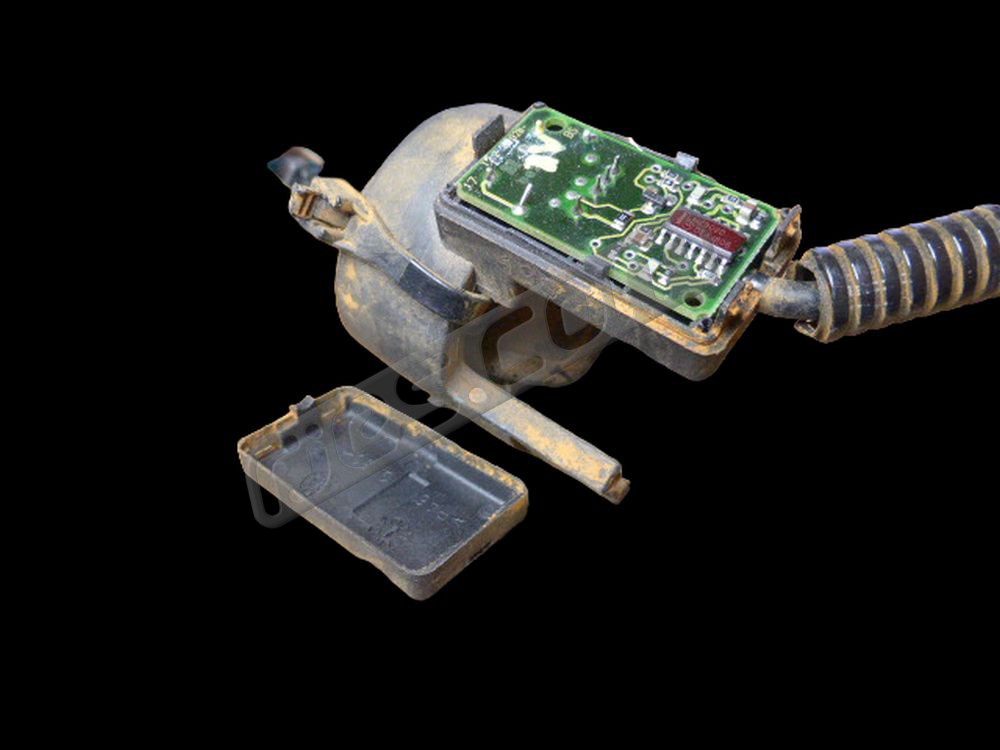
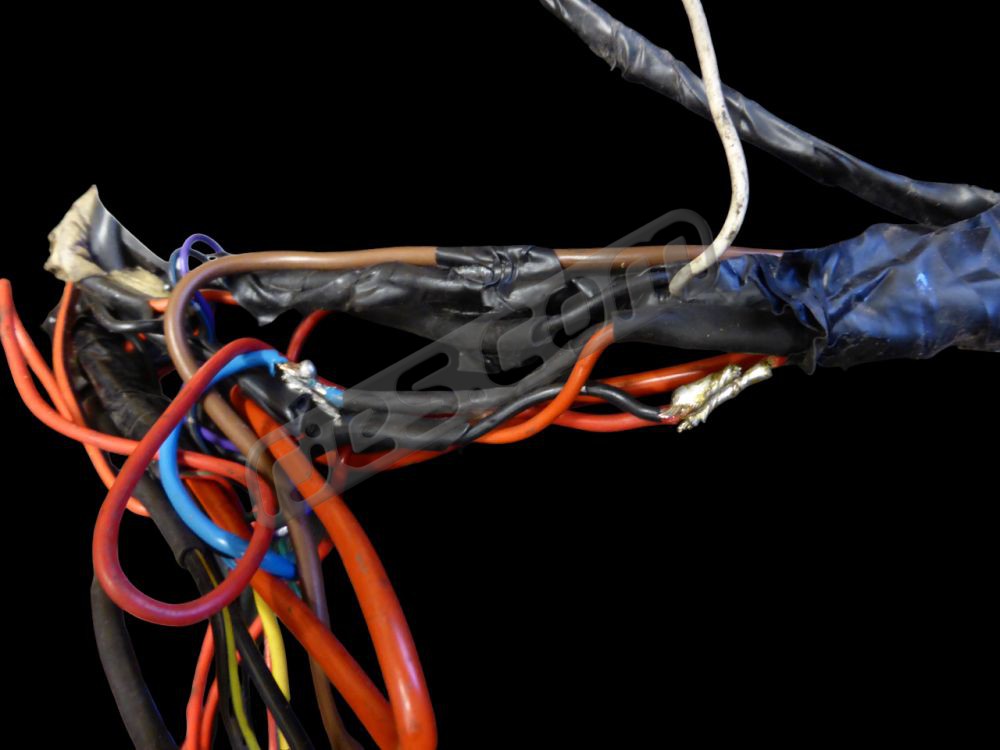
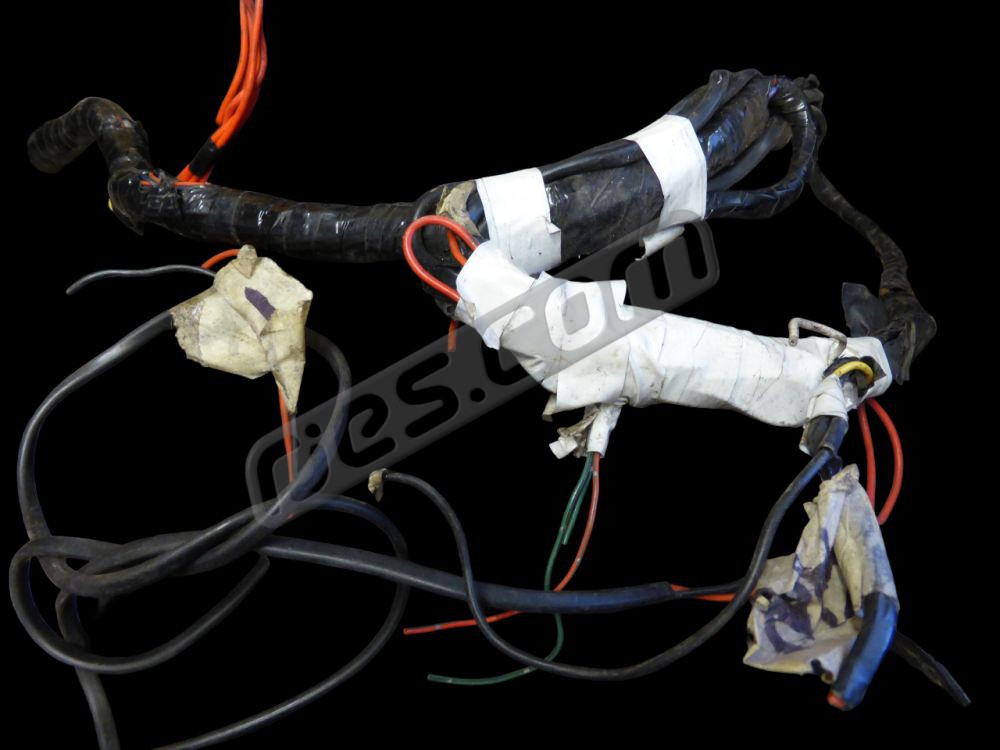
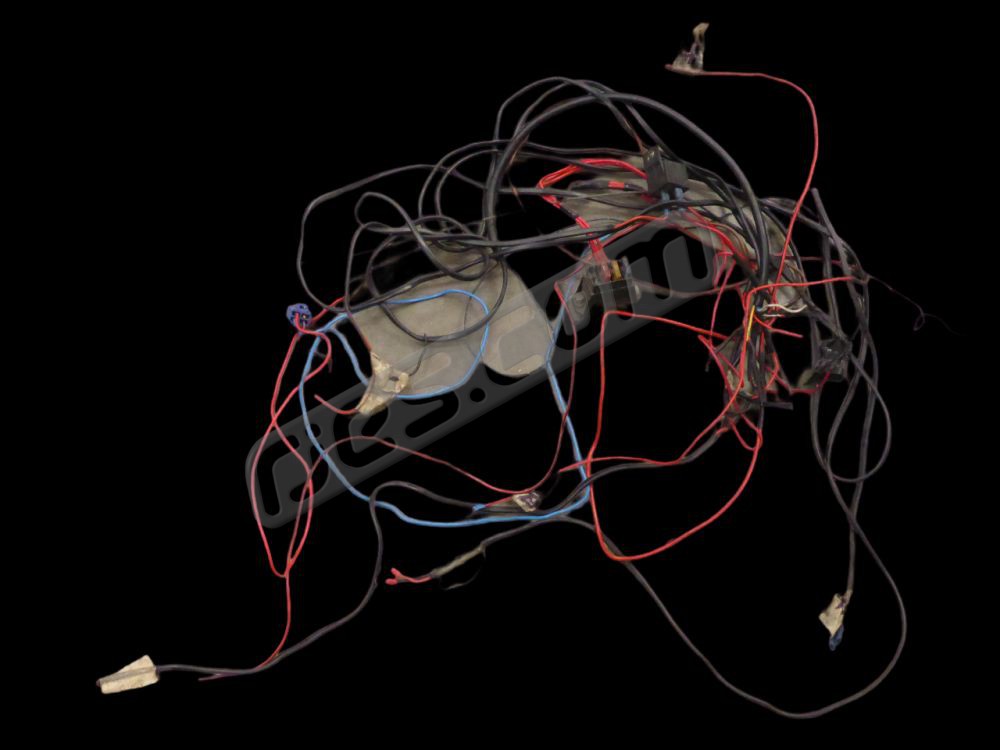
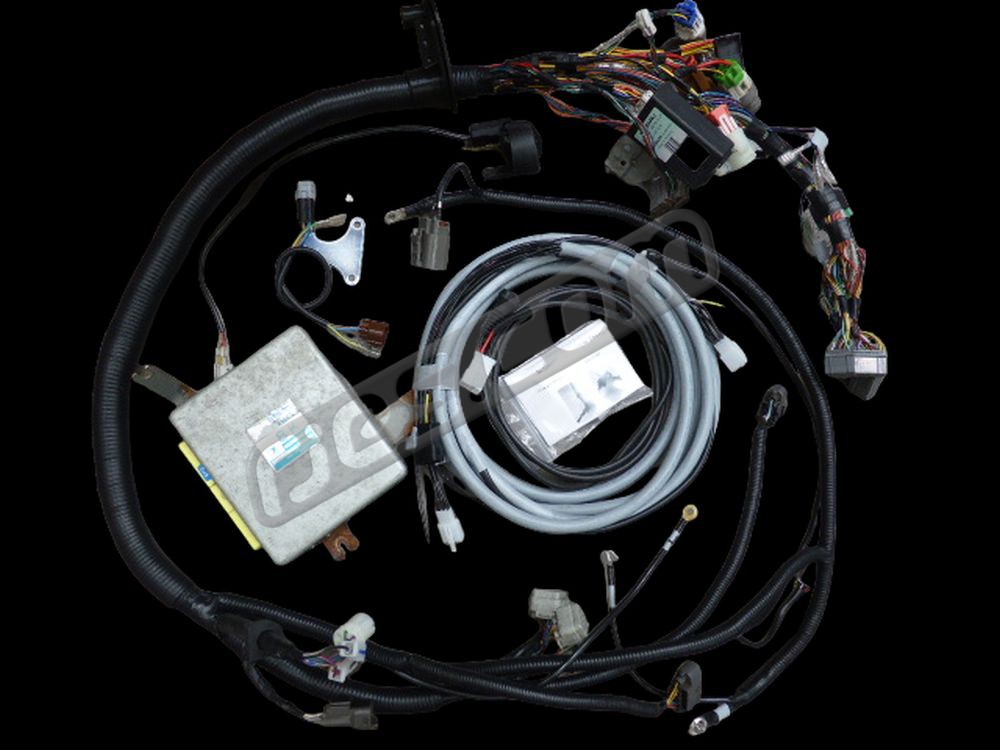
You’d probably imagine this was the work of an amateur with almost no idea what they were doing, but no. The owner had paperwork documenting who did this work, not that we needed to ask. We knew whose work this was from the customer descriptions of the problems they had been having before seeing any of it. A UK ‘specialists’. We’ve seen it all (too) many times before. It was refreshing to see they’d discovered soldering by the time this one was installed – all their early work ‘featured’ neatly taped joins with wires twisted together inside!
Reworking harnesses in this kind of state is not work we really want to do, but there has always been a demand for it. It always costs more than if we’d done the job from scratch. How much more can be anywhere from not much to 50% more. We’ve done some involving re-joining harnesses which have been cut into multiple pieces before which cost far more, but turn down that kind of job these days.
Obviously we’ve picked a pretty bad, but not untypical example to show here. Don’t assume that because the end result looks neater than the first pic above that the job has been done well. Wrapping harnesses neatly takes almost no skill compared to understanding the circuits inside them.
We sometimes get customers who have just finished their conversion projects getting in touch to say how pleased, or how surprised they were that ‘everything fitted’, or ‘everything worked’. On the one hand, to us it seems absurd that anyone should be surprised that what they have bought works – they should expect it to fit and work. That’s our objective as a manufacturer. On the other hand, it’s pretty easy to see why they’re surprised, especially if they’ve done any engine conversions or similar major aftermarket vehicle modification work before. The average quality of engine conversion products is pretty low, with many or even most being manufactured by amateurs with no relevant design engineering or product development experience at all, yet marketed as though they’re ideal products. This isn’t just a VW – Subaru engine conversion thing. There are a lot of crude products out there for many other engine conversions too, and in out opinion, its almost always because the outcome of amateur projects get marketed as professional products.
This issue is what got us involved in designing and developing Subaru engine conversion products in the first place. Back in 2002, the products available for installing Subaru engines into VW’s were all imported from either Germany, the US or Australia, with some reselling them (and marketing them as if they were their own products) here in the UK. After looking into all of them, it was clear that they were not what we were after in terms of quality, so we’d have to design and make everything from scratch. Achieving the expected level of quality would not be an issue with our background in vehicle design engineering.
In the UK at least, almost all of the other current and historic ‘Subaru – VW engine conversion specialists’ businesses have typically been well-meaning amateurs who have stumbled into running an engine conversion business as a result of their DIY project. Practical folks, or garage businesses who have stumbled into being engine conversion parts manufacturers as a result of doing an engine installation for a customer. Either way, a significant proportion have no morals, as their businesses have typically been heavily based on copying the work of others, or in sourcing product from elsewhere, but marketing them as their own work. On the one hand this makes sense – without an engineering design background, it’s the only way they’ll ever make products. Being ignorant of either tolerancing in general or the correct tolerances tolerances to use, etc, they’ll be unaware that there is more to reverse engineering others’ products than that. But on the other hand, should they be marketing the results as tough they are professionally engineered products? Err, no, yet they do. Two have certainly not been so well meaning – either less that truthful about the specification of the conversions installed into their customers vehicles, or making impossible claims about their conversions such as quoting impossibly low prices (not sure how they ever thought that could work – unsurprisingly they didn’t last). The lack of a professional engineering backgrounds amongst many making engine conversion parts for VW’s in the UK stands out to engineers. Not at the fitter / technician / fabricator sort of level (many of them are undoubtedly practical folks), but at the level of professional design engineering and automotive test and development experience. Man + welder ≠ engineer. The average customer may struggle to spot it though, which is totally understandable. Too often they get taken in by shiny marketing or constant social media presence of the sellers, and believe they’re buying professionally engineered products, when sometimes they’re not.
To design and manufacture products for engine conversions to as close OEM standards as is practical in low volume manufacturing requires professional design engineering background, ideally an automotive one, like we have. Many competitors seem to subcontract this to engineering companies who make things for them – i.e. machinists and fabricators, but that is really missing the point. Without the detailed understanding of the systems that they are working on that only a professional engineering background will give them, they will never be able to specify exactly what it is they need their supplier to do in sufficient detail to be able to end up with a range of good products. This really shows with a lot of the products and services offered by competitors. A very high percentage of them are very amateur products, of the type typically made by enthusiastic DIYers doing their own conversions at home, but marketed as if they are properly researched and developed by professional engineers.
Without a suitable background engineering or product development, those with backgrounds in other industries attempting to manufacture products for the engine conversion world often seem oblivious that what they have come up with isn’t even remotely close OEM standards, because they don’t understand what product development is. We have seen examples of new products being offered for sale where if you search hard enough, the manufacturers themselves have already documented having never done any kind of testing at all. They were effectively charging all of their early customers to unwittingly participate in their product development program. When some products for Subaru gearboxes appeared on the market, overnight being pushed on all of the major engine conversion forums in the world, a read of a (then) 30 page thread on thesamba.com showed that they had never been used in a running vehicle at that point. Yet the marketing conveniently did not mention this.
A shiny, yet often suspiciously anonymous web site with little or no technical information, yet a near constant social media presence is very far from a guarantee that you’ll be getting professionally engineered products in this industry, unfortunately. Those with a professional automotive engineering background approach the design and development of products from a completely different level of attention to detail than those who have stumbled into the Subaru engine conversion products manufacturing world from another background. Garage owners, etc. are always practical folks, but they’re not professional engineers. Unless they studied engineering and have relevant professional experience working on something similar, they’re amateur engineers, and it shows.
See below for examples of the worst work we’ve seen:
